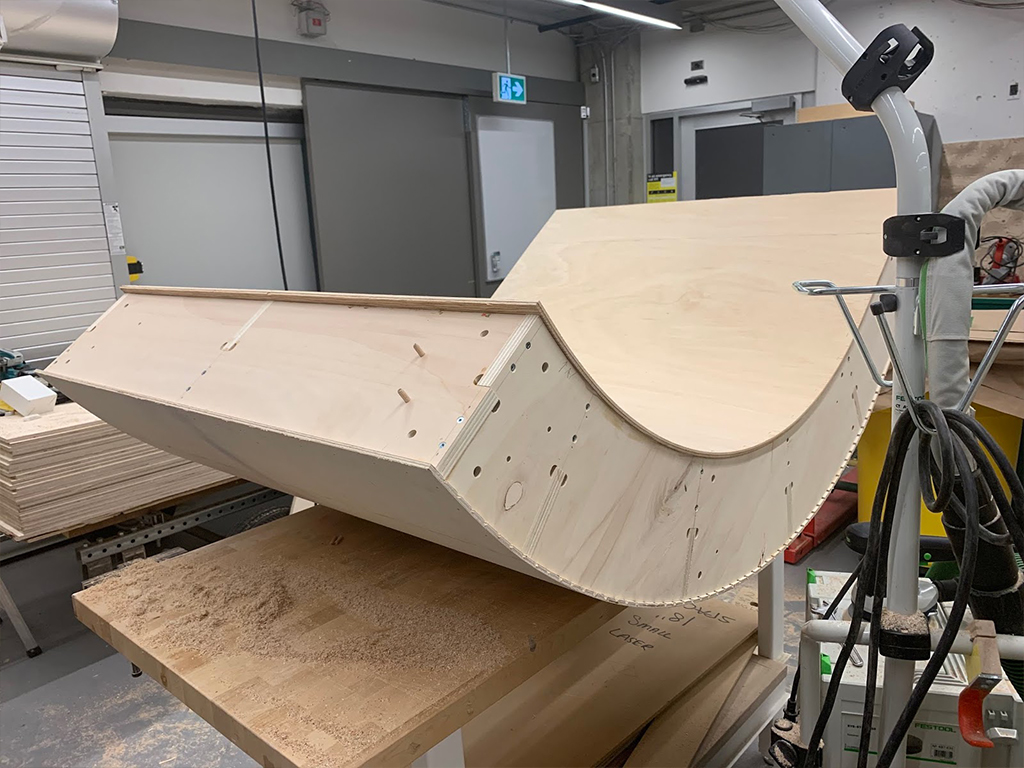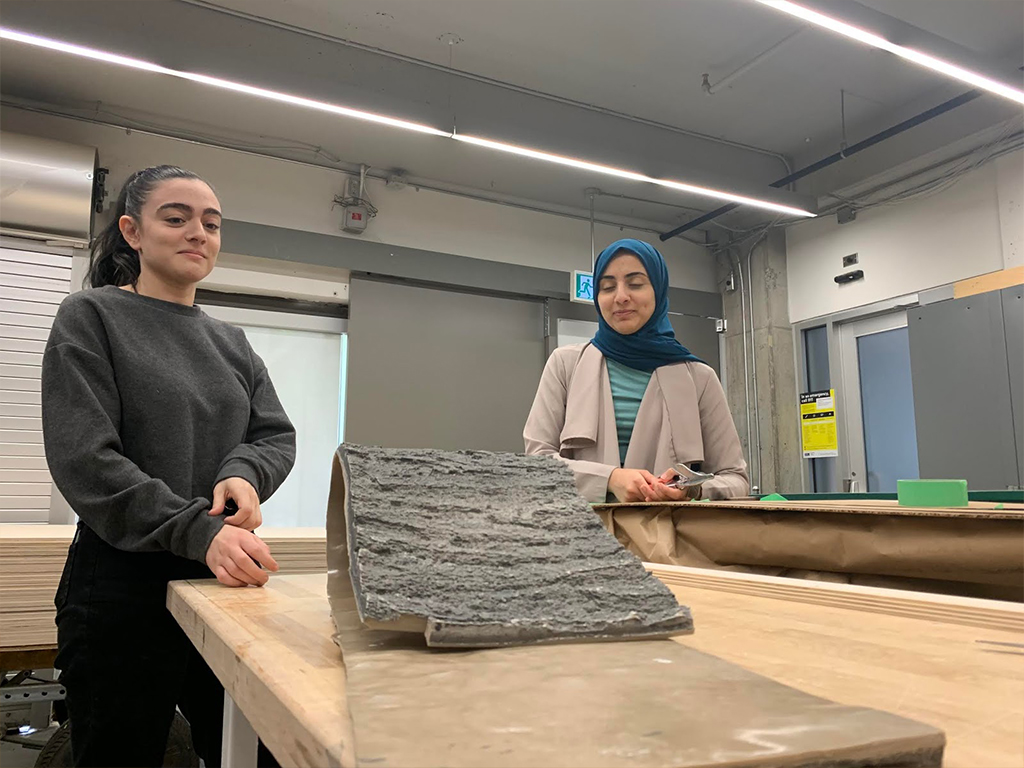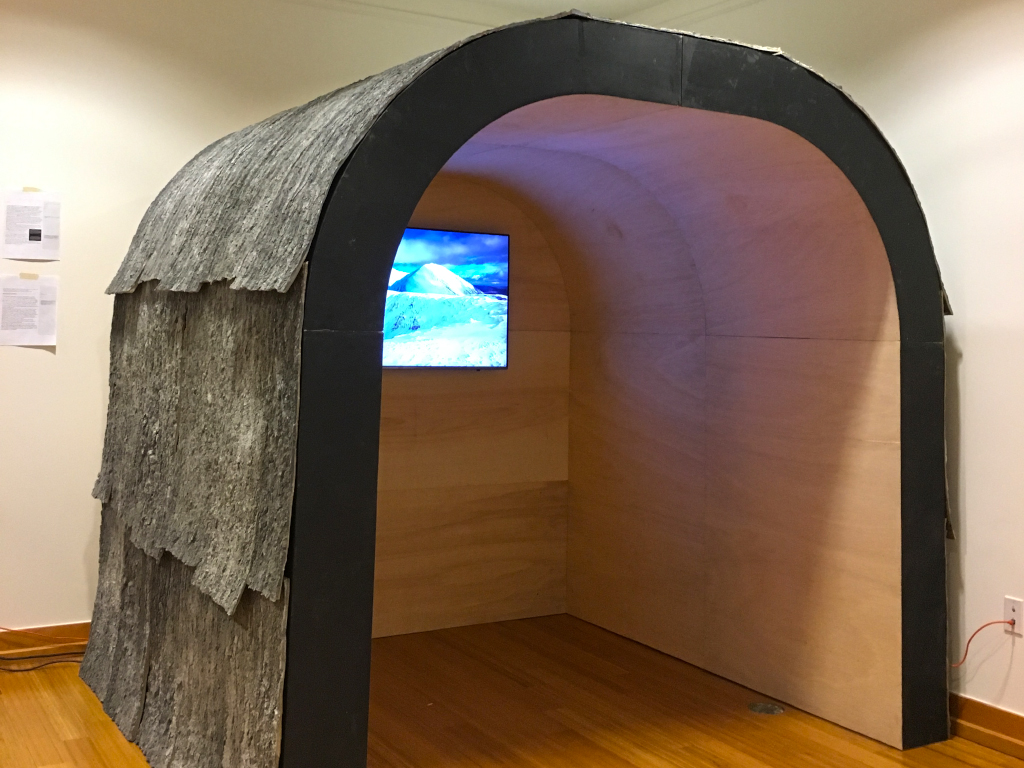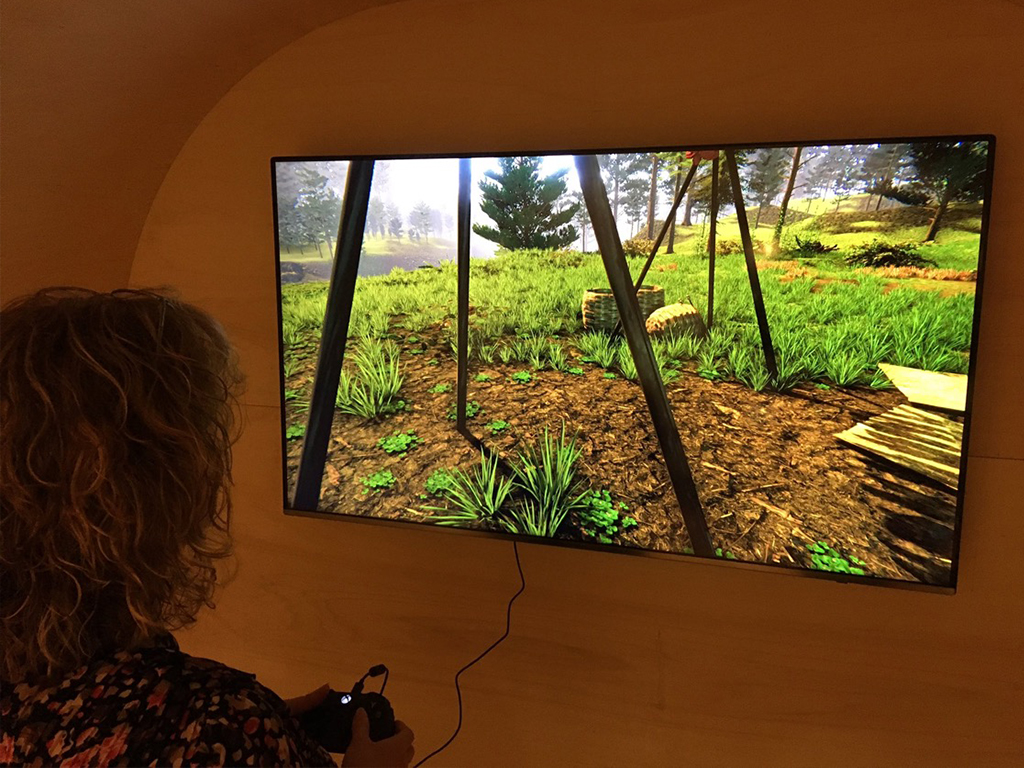Toronto Met DAS Students Collaborate to Recreate Indigenous History
Toronto Met Department of Architectural Science students have been working in close partnership with Dr. Michael Carter at the Toronto Met Digital Media and Whitchurch-Stouffville museum, on a project that allows visitors to experience the virtual re-creation of one of the largest indigenous cities in all of Canada.
Toronto Met architecture students have built the physical structure that will hold the digital exhibit, which is now open and will run from July 22nd 2019-2020.
This project aims to educate and inform Canadians of the rich heritage of indigenous civilizations that have long existed prior to the arrival of settlers. Further, it seeks to center indigenous knowledge, history and archeology in the hands of the Huron-Wendat Nation through technological assistance from Toronto Metropolitan University.
Professor Vincent Hui, a major advocate for experiential learning, with specializations in Digital Communications and Fabrication, has been leading this effort at the Department of Architectural Science.
“My hope is that this project can begin to take seriously the role that settler allies have, as mandated in the Truth and Reconciliation Commission Report, to listen to indigenous communities, to center indigenous relationships and knowledge within higher education, and to provide my students with an opportunity to learn aspects of architecture beyond just the technical pedagogy delivered in classrooms”.
DAS students spent many hours researching Huron-Wendat culture and housing, and ways of replicating ancient modes of building with modern technology. The primary concern for students throughout this project was to ensure that the indigenous history being recreated with archeology belonged to and came from the Huron-Wendat, the end result of which, would provide a way to recreate and celebrate their culture and heritage. This painstaking process was essential and necessary to building this partnership between the Huron-Wendat and Toronto Met students, and is an ongoing effort to both indigenize architectural praxis and to ensure that knowledge production and its deployment in the academe is a result of these important steps. Given historical realities, these trust-building processes provided the possibility for genuine cooperation.
This model of collaboration and learning can provide a useful template that is available to be reproduced for future projects, especially those seeking to work in historically marginalized and disenfranchised communities. For students, it’s a once in a lifetime opportunity to learn to design and build from start to finish, on a unique project that can help indigenous communities preserve their rich history and build bridges for future generations of indigenous architects.



